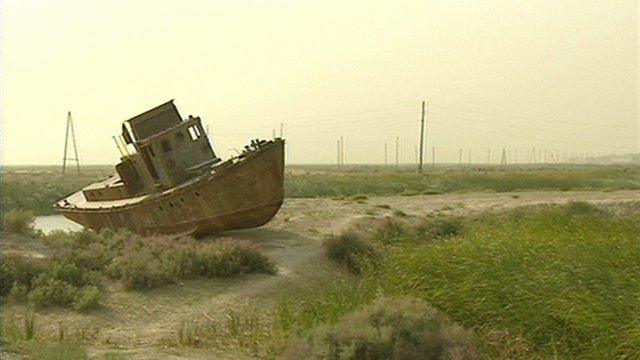The Shrinking Aral Sea
How does an entire sea virtually vanish?
 Diversion of rivers to feed cotton plantations has led Uzbekistan's Aral Sea to all but disappear - with disastrous consequences for those living nearby.
Diversion of rivers to feed cotton plantations has led Uzbekistan's Aral Sea to all but disappear - with disastrous consequences for those living nearby.
For 50 years Soviet leaders diverted the rivers which feed the sea to irrigate cotton. And when it became clear that the land wasn't suited for the thirsty crop the planners simply increased the use of hazardous chemicals. "It is the world's largest man- made environmental disaster", says Ian Small of Medecins Sans Frontieres in Uzbekistan. The charity usually operates in war zones, but for the first time it has now set up a project devoted solely to an environmental catastrophe. The war here is against tuberculosis, kidney disease and cancers that plague the people of the region. Some are caused by toxins, some by the high levels of salt in the water. "Almost nothing grows and it's hard for people - salt concentrates in their joints and they can't walk for a long time...", says Aigali Tankimalov who sailed the Aral Sea for 29 years. Now the wreck of the vessel he commanded in the navy sits opposite his front door - and the nearest water is 100 kilometres away. The last of the 20 or so species of fish that lived in the Aral Sea died out in the 1980s, the victims of an environmental catastrophe. Yet despite the dramatic evidence of environmental destruction, Uzbekistan's new leaders continue to grow cotton and scientist fear the damage is irreparable.
Produced by ABC Australia
FULL SYNOPSIS

